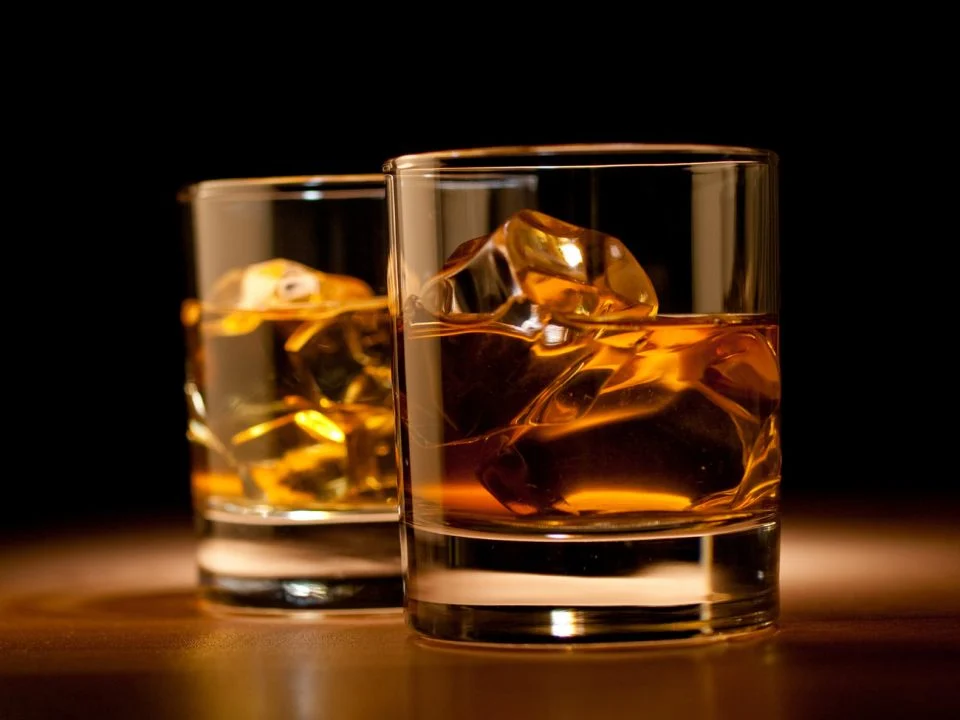In the world of spirits, whiskey and bourbon stand as iconic beverages, often used interchangeably but each with its unique identity. Have you ever wondered what sets these two amber-hued drinks apart? Let’s embark on a journey to explore the fascinating distinctions between whiskey and bourbon, uncovering their unique characteristics and subtle nuances.
Elevate Your Collection – Buy Whiskey Online Now!

Introduction to Whiskey and Bourbon
Defining Whiskey and Bourbon:
Whiskey is a broad category of distilled spirits made from fermented grain mash and aged in wooden barrels. Bourbon, a specific type of whiskey, must adhere to a stringent set of regulations, earning it the title of “America’s Native Spirit.”
Brief History of Both Types of Alcohol:
Whiskey’s origins trace back to ancient civilizations, with early evidence of its production in Mesopotamia around 4000 BC. Bourbon emerged in the 18th century in the American colonies, initially known as “corn whiskey” or “Kentucky whiskey.”
Cultural Significance and Popularity of Whiskey and Bourbon:
Whiskey has a rich cultural heritage, often associated with social gatherings and celebrations. Bourbon, deeply rooted in American culture, symbolizes national pride and identity.
Ingredients and Production Process
Whiskey Ingredients:
Whiskey is made from a variety of grains, including barley, corn, rye, and wheat. These grains are malted, mashed, fermented, distilled, and aged.
Bourbon Ingredients:
Bourbon’s defining ingredient is its mash bill, which must contain at least 51% corn. This high corn content gives bourbon its distinctive sweetness and smoothness.
Production Process:
The production of both whiskey and bourbon involves fermentation, distillation, and aging. Fermentation converts the sugars in the mash into alcohol, distillation separates the alcohol from the liquid, and aging in oak barrels develops the spirit’s flavor and character.
Key Differences in Distillation and Aging:
Whiskey production methods vary by region, with differences in the number of distillations and types of stills used. Bourbon must be distilled to no more than 80% alcohol by volume (ABV) and aged in new, charred oak barrels.
Legal Definitions and Regulations
Whiskey Regulations:
Whiskey production is regulated by various countries to ensure quality and consistency, with standards for aging, alcohol content, and labeling.
Bourbon Regulations:
Bourbon must meet specific criteria set by the U.S. Code of Federal Regulations, including a mash bill of at least 51% corn, distillation to no more than 80% ABV, and aging in new, charred oak barrels for at least two years.
Geographical Indications:
Geographical indications play a crucial role in classifying whiskey and bourbon. Scotch whisky must be produced in Scotland, Irish whiskey in Ireland, and bourbon exclusively in the United States.
Flavor Profiles and Characteristics
Whiskey Flavor Profile:
Whiskey flavors vary widely based on the type of grain used, distillation method, and aging process. Scotch whisky is known for its malty, peaty flavor, while Irish whiskey is smooth and triple-distilled.
Bourbon Flavor Profile:
Bourbon is characterized by its sweet, smooth flavor with notes of vanilla, caramel, oak, and spice, derived from its corn content and new oak barrel aging.
Comparative Tasting Notes:
When comparing whiskey and bourbon, bourbon tends to be smoother and sweeter, while whiskey can have a broader range of flavors, including smokiness, fruitiness, and spice, depending on its origin and production method.
Popular Types of Whiskey and Bourbon
Types of Whiskey:
The whiskey category includes various subtypes, such as:
- Scotch whisky: Made in Scotland, aged for at least three years, known for its malty and peaty flavors.
- Irish whiskey: Triple-distilled for smoothness, light and clean in flavor.
- Canadian whisky: Blended from different grains, known for its mellow and easy-drinking style.
- American whiskey: Includes bourbon and other types like rye whiskey and Tennessee whiskey.
Famous Bourbon Brands:
Popular bourbon brands include:
- Maker’s Mark: Known for its smooth, full-flavored profile.
- Jim Beam: A classic bourbon with a rich history and robust flavor.
- Buffalo Trace: Celebrated for its complex flavor profile and smooth finish.
Conclusion
Understanding the differences between whiskey and bourbon enhances the appreciation of these iconic spirits. While all bourbon is whiskey, not all whiskey is bourbon, with each offering distinct flavors and cultural significance. Whether you prefer the sweet, smooth notes of bourbon or the diverse flavors of whiskey, exploring these spirits offers a rich and rewarding experience.
